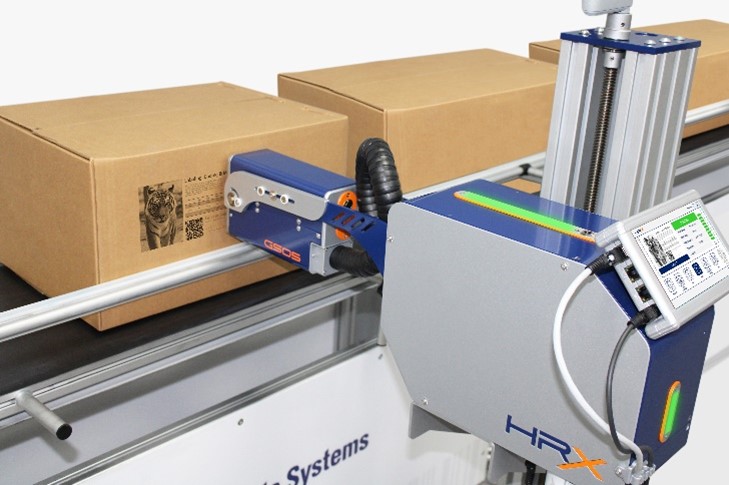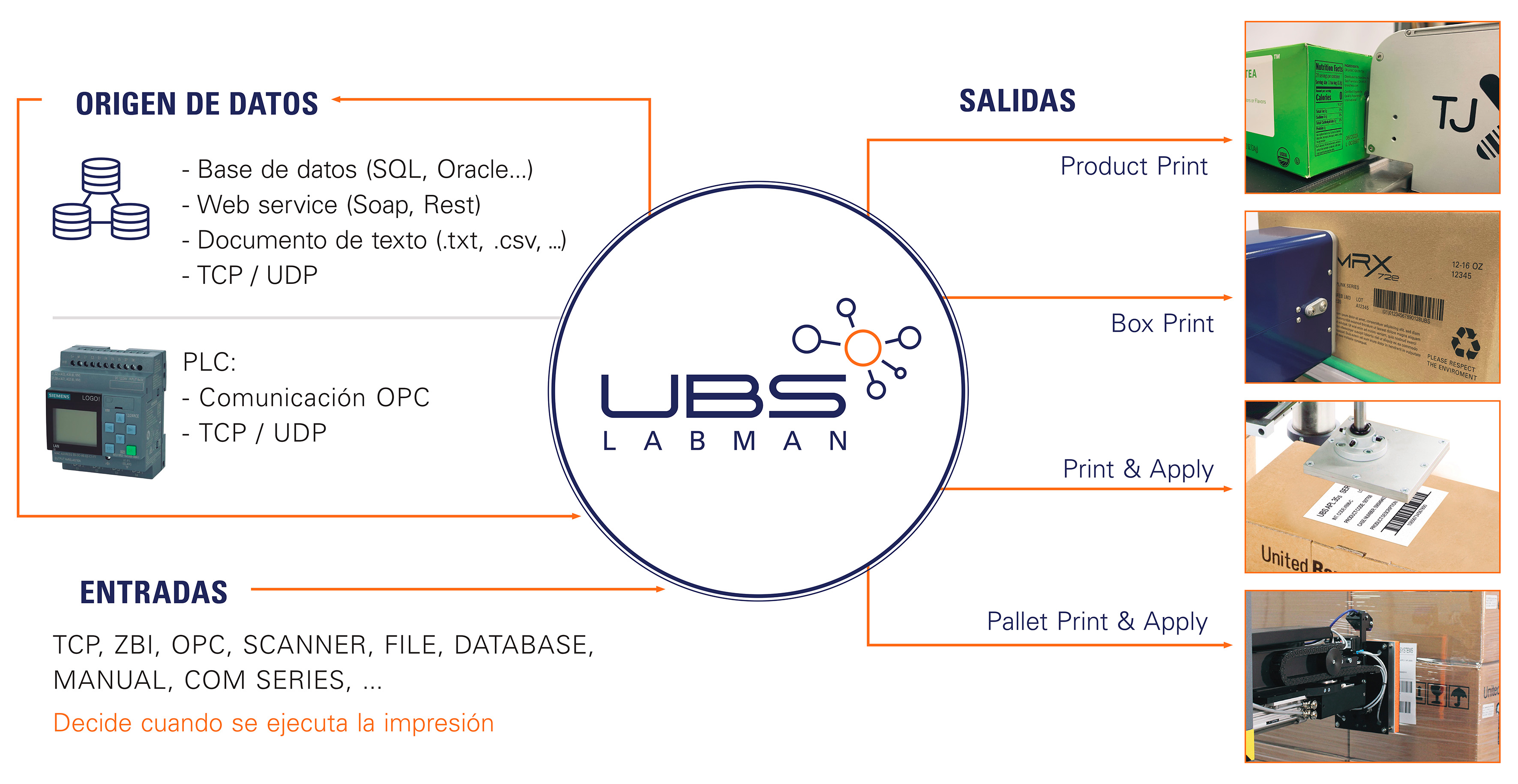In this guide, United Barcode Systems, manufacturers of labelling, coding and marking equipment with over 30 years of experience, will explain the types of systems available, factors to consider when selecting equipment and innovative technologies that are transforming the coding of industrial products.
Material coding
What is material marking and coding?
Material marking and coding is the process of printing or marking information on products and materials in any industry for identification purposes. This can include data such as batch numbers, production dates, barcodes and other identifiers to ensure product traceability. This process is essential in sectors such as food, pharmaceutical and automotive, where the correct coding of all types of products is necessary for quality control and regulatory compliance.
Types of marking and coding systems
Laser marking
Laser marking is a technology that uses a concentrated beam of light to engrave or mark materials such as metals, plastics and glass. Although it often provides a durable and highly accurate mark, one of its main disadvantages is its limited flexibility in terms of adapting the equipment to changes in material or message.
Since the equipment is designed specifically for one type of application, any change in packaging material or identification message content may require significant adjustments, such as changing lenses or even purchasing new equipment. This makes laser marking a more costly and less adaptable option for environments that need versatility and rapid adaptation in their coding processes.
Inkjet printing
Inkjet printing is a versatile solution for coding materials on high-speed production lines. Equipment such as the APLINK Series from United Barcode Systems enables precise coding of text, barcodes on large products and packaging.
With fully flexible, cost-optimized and energy-efficient (and therefore environmentally friendly) high-resolution inkjet printers such as the APLINK HRX, APLINK MRXe or APLINK LCXe, clear and sharp printing is ensured even on porous and non-porous surfaces, such as boxes, sacks, packaging and others.

APLINK HRX printing on box
Impact and micro-percussion marking
Impact and micro-percussion marking is a technology that uses metal tips to etch directly into hard materials, such as steel, providing deep and durable coding. While it can be effective in demanding industrial environments, such as the automotive sector, this technology has several important limitations.
A key disadvantage is that the impact process can damage the material, especially on more sensitive surfaces, and generate vibrations that affect other elements in the production line. In addition, this method is often noisy and requires frequent maintenance to ensure marking accuracy, which increases operating costs and makes it difficult to integrate into production environments that require high flexibility and minimal disruption.
Factors to consider when choosing a marking and coding system
Type of material to be marked
The product material determines the most appropriate type of marking technology. For example, inkjet printing is effective for porous and non-porous surfaces, while laser marking is ideal for hard, tough materials.
Production speed and volume
Production volume and line speed are critical factors. High-speed systems, such as the UBS APLINK series, allow products to be coded in high volumes without compromising quality.
Cost and maintenance
Each coding technology has specific cost and maintenance requirements. Our APLINK HRX equipment, for example, is designed to reduce ink consumption and maintenance costs, offering a cost-effective and environmentally friendly solution.
Emerging technologies in material coding
Marking and coding with UVLED technology
UVLED technology has revolutionized the coding market by enabling the rapid curing of inks in high-speed applications. Curable inks such as the United Barcode Systems 7225 UVLED Cure use this technology to ensure instant ink curing on materials such as plastics and metals, reducing drying times and improving efficiency.

United Barcode Systems 7225 UVLED
Innovations in design and management software
Advanced tools such as UBS DESIGNER and UBS LABMAN facilitate the creation and management of labels and messages in real time. UBS DESIGNER allows companies to customize labels and messages to meet regulations and customer specifications, while UBS LABMAN enables seamless integration with ERP/MES systems, optimizing product traceability and data management and administration of labels and messages on each production line.

UBS LABMAN facilitate the creation and management of labels
Tips for marking and coding system selection
When choosing a marking and coding system for industrial materials, it is important to consider:
1. Specific needs assessment: Define the type of material, production volume and type of information that needs to be coded. This will facilitate the choice of a system that responds to production requirements and quality and traceability regulations.
2. Cost optimization: It is advisable to evaluate not only the initial cost of the machine, but also the associated costs, such as ink consumption, maintenance and frequency of component replacement.
3. Compatibility with management systems: Integrating a coding system with management software optimizes data flow and ensures that information is always up to date. This is crucial for traceability, as it allows real-time control of labels and coded information.
Implementing the right marking and coding system for industrial materials allows companies to ensure the traceability and quality of their products, while optimizing cost and operational efficiency.
From high-resolution inkjet printing equipment to advanced software tools that improve label management and data integration into production lines, United Barcode Systems offers innovative and reliable solutions.
Contact us today to find out how our industrial materials coding systems can transform your production and take your company's traceability and efficiency to the next level.
Do you want to know more about the selection of marking and coding systems for materials?

